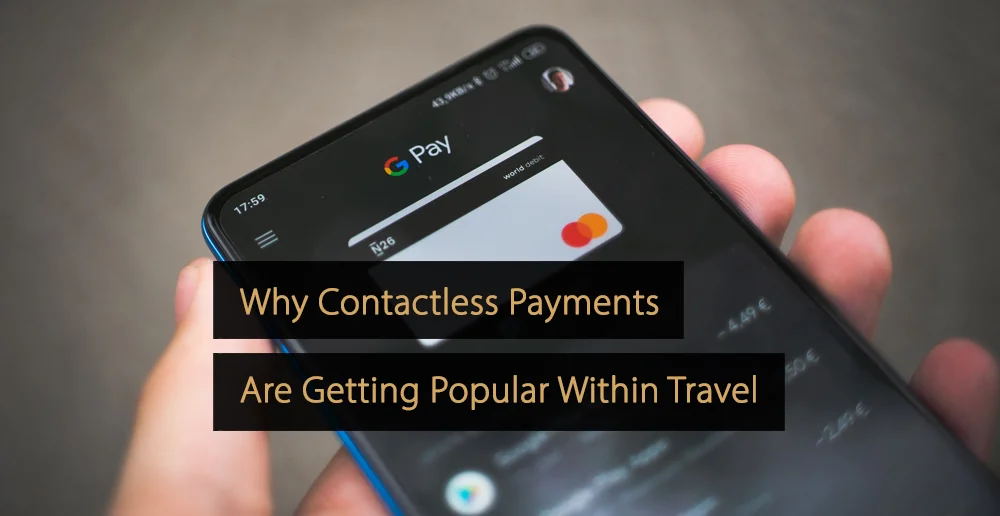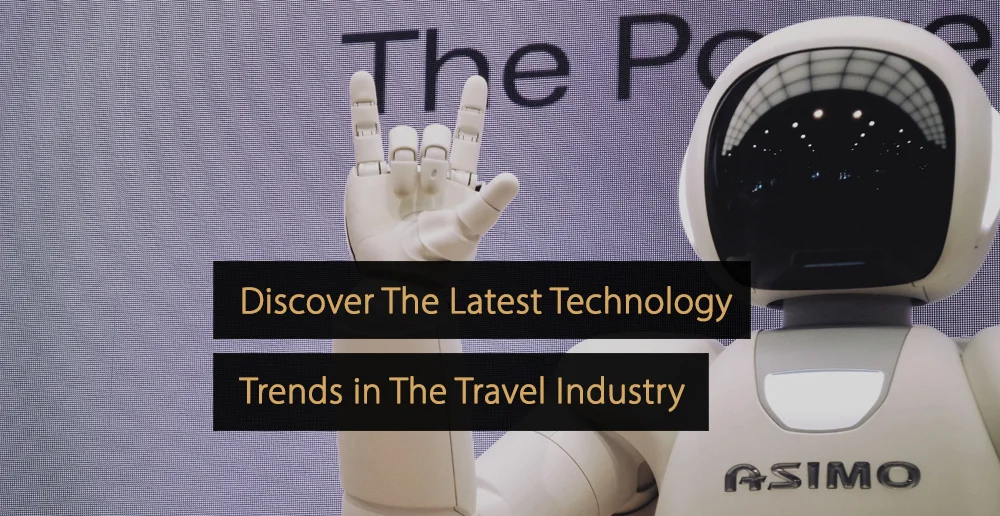It only stands to reason that the travel industry needs to evolve in line with the technology needs of its customers. Since the corona pandemic, customers have been more careful about touching public devices, creating new needs. One area of interest involves how travelers can now pay for a reservation or other services. Let us look at why physical payments are now being largely replaced by contactless payments and the benefits these methods can offer.
Table of Contents:
- What is the Main Principle Behind This Payment Method?
- The Relationship Between Wireless Payments and the Travel Industry
- What Institutions Currently Offer Wireless Payment Options?
- 1. A User-Friendly Sense of Safety
- 2. An Excellent Way to Enhance Customer Loyalty and Brand Recognition
- 3. Addressing Security Concerns
- 4. Embracing the Notion of End-User Satisfaction
What is the Main Principle Behind This Payment Method?
Before we delve into why this payment type has become popular, it is prudent to look at how it differs from traditional transactions. Wireless communication plays an important role, as many smartphones and credit cards utilize a type of data transmission known as RFID technology. Simply put, a credit card no longer has to come into direct contact with the terminal. It can simply place a few inches away for a transaction to be processed.
Additionally, a growing number of financial organizations are offering bespoke smartphone applications. These enable users to place their phone near a standard credit card reader. The user will be notified within seconds if the transaction is approved. Not only is this an extremely convenient and secure technique, but it is beneficial regarding the current global health situation.
The Relationship Between Wireless Payments and the Travel Industry
Contactless payments have become increasingly prevalent within the travel and tourism sector. This arises from the simple fact that a growing number of devices support such technology. Any payment system with a sideways WiFi logo can handle wireless payments.
Another interesting development is that many travel-related firms are beginning to develop bespoke smartphone applications that support wireless payment options. A client can download these at no charge; saving time and confusion during the booking process. Many applications will also contain links to proprietary offers and a means to navigate to the website for additional information. Not only are contactless payments great options from a logistical perspective, but your firm can likewise employ them as effective marketing tools.
What Institutions Currently Offer Wireless Payment Options?
A growing number of financial entities provide this type of technology to their clients. This is excellent news for travel firms, as they will normally be able to adopt such an option without many problems. Here are a handful of institutions that have begun to support contactless payments:
- Building societies and banks
- Credit card agencies
- Google and Apple Pay
- Third-party firms such as Samsung and Fitbit
Now that we can appreciate the rather ubiquitous nature of these payment methods let’s look at four ways they can benefit your travel business.
1. A User-Friendly Sense of Safety
In the past, the primary worry associated with payments involved security in relation to the personal details of the client. While this is still a viable concern (we will address the notion of security later), it has now been overtaken by real-world hygiene.
Thanks in no small part to the recent coronavirus outbreak, the travel and tourism industry has been hit extremely hard. This is due to what can only be called a “perfect storm” that includes factors such as:
- Border closures for extended periods of time.
- Mandatory quarantine periods of up to two weeks upon arrival at specific destinations.
- The financial hardships experienced by many travel-related firms.
- Understandable worries about personal hygiene and disease transmission while traveling.
Unfortunately, travel firms cannot necessarily control the first three factors. However, contactless payment methods will be able to address the final challenge.
As opposed to physically interacting with a sales representative or a machine such as a standard credit card reader, these wireless payments will not require any contact. This is an excellent way to ensure higher levels of hygiene, a real concern when we consider how easily COVID-19 is thought to spread.
However, contactless payments will satisfy many other health worries once the pandemic finally ends. Travelers will likely be quite wary of traditional forms of payment for years into the future. Therefore, companies adopting this type of technology in advance will undoubtedly enjoy a competitive edge.
2. An Excellent Way to Enhance Customer Loyalty and Brand Recognition
To be absolutely clear, the travel industry will likely suffer from the current health crisis for years. It is still wise to stress the simple fact that firms capable of building a solid reputation at present are likely to experience a greater degree of client loyalty in the coming years. How can contactless payments be used to enhance your brand recognition?
Branding will often represent the main factor between a successful travel-related firm and one in a state of anonymity. This is true whether referring to airlines, cruise ships, car hire firms, or the restaurant sector. The simple fact of the matter is that contactless payments will illustrate the ability of your firm to embrace the latest technological innovations while keeping the end user’s needs in mind.
It is likewise important to mention that this type of payment method can be used in tandem with other loyalty rewards programs. Whether referring to cash-back offers, early booking opportunities, or more flexible travel options, this flexibility will reflect positively upon your firm. This can result in positive online reviews, higher booking rates, and, ultimately, a greater sense of loyalty. The good news is that contactless payments are relatively easy to implement, and the associated results will be seen quickly.
3. Addressing Security Concerns
Digital security is an obvious concern in this day and age. To put such an observation into perspective, the travel management conglomerate CWT was recently forced to pay out $4.5 million to hackers who could obtain proprietary data concerning their customers (1). When we consider that massive amounts of information are contained within the digital domain, it only stands to reason that companies need to be able to provide their clients with superior peace of mind if they hope to enjoy return bookings.
However, contactless payments can provide an additional “firewall” regarding possible data breaches. Let us assume for a moment that a card or a phone has been lost or stolen. All transactions and the associated details will be immediately canceled upon the customer’s request. Furthermore, performing actions such as double bookings (especially if fraud is suspected) is impossible. The technology employed by contactless payment systems is some of the very same utilized by major banks and similar financial institutions.
Firms with this type of travel technology can provide their customers with an additional sense of confidence in the knowledge that their personal details are protected from prying eyes at all times.
4. Embracing the Notion of End-User Satisfaction
We live in an on-demand society. In other words, your travel firm needs to be able to provide customers with a quick and streamlined means to make a payment. This is even more relevant if a client happens to be under time constraints. Wireless payment methods usually require no more than 15 seconds to complete. This is advantageous for those who need to adhere to a tight schedule.
While it is important to mention that contactless payments will resonate with the millennial generation, we should also highlight how these methods can address the needs of those with little digital expertise. Older generations can benefit from this hassle-free payment option. Whether referring to a pensioner hoping to visit Spain for a holiday or a couple wishing to book a hotel reservation quickly, the result is fewer cancellations and less strain upon your customer service department.
Another interesting observation worth highlighting is the fact that your firm can often utilize contactless payments in tandem with other opportunities to increase levels of customer satisfaction. Here are some examples to consider:
Customers who choose wireless payment methods will receive a slight booking discount.
Wireless payments can also present additional possibilities, such as upgrades or local restaurant offers. Some hands-free payments will provide rewards points (frequent flyer miles are common opportunities). Therefore, it is clear that these wireless payments will help ensure long-term customer satisfaction.
Video: How Do Contactless Payments Work?
Contactless payments are here to stay. While the recent COVID-19 outbreak may have served to highlight their importance at present, this technology is set to make digital “waves” well into the future. The benefits behind such an approach cannot be denied, and the chances are high that wireless transactions will become the mainstay of the travel sector in the near future. This is why embracing these options sooner rather than later is an excellent way to ensure your firm remains well ahead of the competition.
More Tips to Grow Your Business
Revfine.com is the leading knowledge platform for the hospitality and travel industry. Professionals use our insights, strategies, and actionable tips to get inspired, optimize revenue, innovate processes, and improve customer experience.Explore expert advice on management, marketing, revenue management, operations, software, and technology in our dedicated Hotel, Hospitality, and Travel & Tourism categories.
This article is written by:
Hi, I am Martijn Barten, founder of Revfine.com. With 20 years of experience in the hospitality industry, I specialize in optimizing revenue by combining revenue management with marketing strategies. I have successfully developed, implemented, and managed revenue management and marketing strategies for individual properties and multi-property portfolios.
Sources:
(1) PYMNTS, Travel Management Firm CWT Pays $4.5M In Bitcoin To Hackers









Leave A Comment